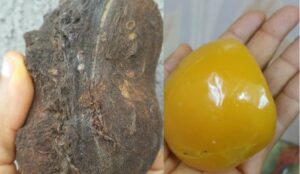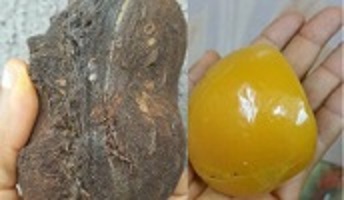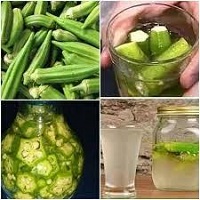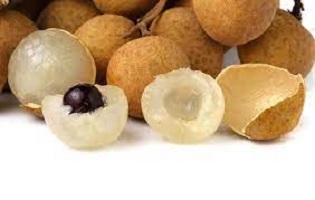Monkey Kola – Health Benefits of Yellow Monkey Kola
Monkey Kola – Health Benefits of Yellow Monkey Kola. Please watch >>>>

Image: Health Benefits of Monkey Kola You Should Know
Monkey Kola Native Names
- Nigeria
The monkey kola fruit is called obi edun in Yoruba, which means Kolanut joined together: Obi – Kolanut and Edun – joined together.
In Igbo, it’s called Ochicha, Utu, Achicha, or Ochiricha, while in Efik/Ibibio, it’s called Ndiya.
Ghana
- Ananse Adodowa, Akan-Asante – meaning spider’s spool or bobbins: Ananse – spider and Adodowa – spool/ bobbin
- Anyi-Aowin – ewale
- Adangme-Krobo – asikanσyereba, asikσnobea
- Ananse Aya, Brong – meaning spider’s brass pot: Ananse – spider and Aya – brass pot
- Twi – Osonkurobia
[I’m not sure what the Hausa and Hindi names for monkey kola are. If you have any information, please share it with us in the comments section below]
The monkey kola tree is a nutritious and healthy plant that may be found in villages and houses.
In Nigeria, the fruit pulp is consumed by humans and a few animals such as baboons, monkeys, and other primates.
With all of its nutritious properties, this African fruit needs more awareness and attention so that people are aware of it and its tremendous health benefits.
Health Benefits of Yellow Monkey Kola
The most prevalent form of African indigenous wild fruit called monkey cola that can be found around homes and villages is yellow monkey kola.
Beta-carotene, vitamin C, riboflavin, nicotinic acid, thiamine, flavonoids, alkaloids, saponins, tannins, fiber, and other nutrients and phytochemical qualities are among the probable constituents of Yellow Monkey Kola.
Vitamins, carbs, phosphorus, potassium, calcium, and magnesium are all nutrients found in this fruit. It includes other nutrients that are beneficial to human health in a variety of ways, including the following:
- It aids in the improvement of skin health.
The beta-carotene in this yellow monkey cola promotes healthy skin by giving it a lustrous sheen.
Beta-carotene is a provitamin, a carotenoid, and a potent antioxidant that helps to enrich the skin by repairing and protecting damaged skin cells.
It works as an antioxidant to preserve the skin from the effects of aging, such as wrinkles.
- Moderate cholesterol in the body
Because of the presence of niacin, this fruit aids in the reduction of bad cholesterol, also known as low-density lipoprotein, and the improvement of high-density lipoprotein, also known as good cholesterol (vitamins B3).
- The fruit aids in the improvement of eye health.
Beta-carotene is converted by the body into vitamin A, which aids in eye health.
Vitamin A is a natural vitamin found in yellow monkey kola that is essential for good vision and preventing eye abnormalities caused by a vitamin deficiency.
- Maintaining a Healthy Gastrointestinal Tract
Yellow kola, like other fruits such as cola par-chycarpa, has soluble fibers that help to keep the gastrointestinal tract healthy.
The soluble fiber in yellow kola protects the high organs that connect the mouth, gut (large and small), and esophagus to the anus.
This means that the effect begins with the intake and ends with the egest.
- Heart Health Improves
Cola Parchycarpa consumption can help moderately reduce the risk of heart disease because it is high in metabolites that are beneficial to heart health.
Flavonoids have been shown to have a heart-healthy effect. They showed that preventing cardiac and heart damage caused by coronary artery problems was beneficial.
- It aids in the maintenance of healthy bones.
Essential minerals have been found to be important for the maintenance of healthy bones and protein synthesis, as well as the proper operation and development of vital body cells, organs, tissues, and biological processes in yellow monkey kola.
Mineral consumption, particularly in fruits like yellow monkey kola, can reduce the incidence of bone loss.
Minerals such as calcium and potassium are used to prevent osteoporosis-related bone fractures in this fruit, which also contains protein and vitamin D.
- Aid in the metabolism of the body
Riboflavin, often known as vitamin B2, is found in fruits and aids in the digestion of fat and protein in the body’s system.
Vitamin B-2 is a water-soluble vitamin that is important in many metabolic reactions, particularly when sugar carbohydrates are broken down to provide energy.
- Assist in weight management
it is a native fruit that is highly recommended for weight loss and weight control, as well as providing essential nutrients.
The amount of fiber in the body plays an important role in weight management by balancing calorie intake with calorie loss.
Because of the low-calorie effect, it is a good weight-loss diet. Fruits and vegetables with high fiber and low calories are ideal for weight loss, according to nutrition experts.
- Nutritional Value of Monkey kola
The nut has high levels of iron, zinc, and copper, as well as B-vitamins and vitamin C. The concentration of phytochemicals was quite high, with flavonoids being the most common.
In terms of health benefits, the is a fruit that should be utilized to its full potential.
The most common minerals were calcium, potassium, and -carotene. Sodium, calcium, and phosphorus are the minerals sodium, calcium, and phosphorus.
The 5 Most Important Facts About the Monkey Kola Health Benefits
- The flesh of the kola plant is edible and can be yellow, red, or white. The cola variety of monkey kola is the most popular and has greater nutritional and therapeutic benefits than the red and white monkey kola varieties.
- The leaves have medicinal properties and are used to treat eye infections. Despite its scarcity, monkey kola is a delicious and flavorful fruit.
- The white Monkey kola pulp is known as cola lepidota and is the least popular, whereas the red Monkey kola pulp is known as cola lat-eritia and is the most popular.
- The fruit of the monkey kola is almost as crisp as a carrot. From June through November, the fruits are available and are high in vitamins and minerals. And are packed with plenty of fiber, vitamins, and minerals.
- Minerals such as calcium, phosphorus, iron, sodium zinc, and potassium are contained in them.
- Red Monkey Kola
It is one of many varieties found throughout West Africa. It has a crimson exocarp with a white seed within. It, like other types, has a variety of medicinal properties and health benefits
Red Monkey Kola’s Health Benefits ~ the Benefits of Red Monkey Kola
The monkey kola plant’s leaf is sometimes consumed as food, and the plant (the unidentified section) is said to heal a variety of shin illnesses. In woodworking, wood is frequently utilized.
- Monkey Kola and Pregnancy
There is presently no research on the negative effects of the drug on pregnancy and breastfeeding. We’ll keep you updated as things progress, so stay tuned!
Side Effects
Monkey kola is high in nutrients and should be used in moderation for optimal health.
How to Eat
- Firstly, wash the yellow fruit, which has a lizard-like feel.
- Secondly, cut it in half and remove the seed.
- After that, take a bite of the fruit; it makes a crunchy sound like a new apple. It has a resounding crisp to it.
Bottom Line
- When it comes to nutritional value, the yellow kola nut is a fantastic fruit.
It has a sweet, crispy taste with no fat content, as well as key nutrients and phytochemical compositions that are beneficial to one’s health.
- The fruit has been linked to a variety of health benefits, ranging from internal organ metabolism to the outermost part of the body, and the skin; the extraction of monkey kola seed oil is also beneficial.
Unlike the seeds of the kola nut, the seeds of the monkey cola species are not edible.
So, there you have it. I’ll see what else I can learn and share with you,
FAQs
About Health Benefits and Nutritional Value of Yellow Monkey Kola
- Maintains Healthy Gastrointestinal Tract
- Helps in Weight Management
- Boosts Skin Health
- Improves Heart Health
- Maintains Healthy Bones
- Improves Eye Health
- Helps in Body Metabolism
- Moderates Body Cholesterol
What is the nutritional value of monkey kola?
Iron, zinc, and copper, as well as B-vitamins and vitamin C, were abundant in monkey kola.
The phytochemical concentration was quite high, with flavonoids (415-494mg/100g) being the most prevalent.
Monkey kola is a fruit that should be used to its maximum capacity in terms of health advantages.
Is the seed of monkey kola edible? Is monkey kola seed edible?
The plant is native to tropical Africa, with its greatest diversity found in West Africa.
The fruits are a favorite cuisine of the indigenous peoples of southern Nigeria and the Cameron. Unlike the seeds of the kola nut, the seeds of the monkey cola species are not edible (C. nitida)
What is a monkey kola?
Monkey kola refers to several edible wild relatives of the West African kola nut, such as Cola lateritia. C. pachycarpa K. Schum, C. lepidota K. Schum, and C. lepidota K.
What is the definition of a monkey fruit? What is a monkey fruit?
Monkey fruit is a popular name for a variety of plants, including species from the following genera: Artocarpus. Limonia. Garcinia. Myrianthus.
What is Obi Edun in English?
Obi-Edun is a Yoruba word that means “attached Kolanut”: Kolanut and Edun – Obi – teamed up.
Is monkey fruit dangerous to eat? Is monkey fruit poisonous?
Monkey orange fruit is buried in the sand near homesteads to allow the pulp to liquefy.
The ripe fruit can be eaten raw or sun-dried to make fruit rolls, jam, juices, or wines. Although the fruit is high in vitamin C and B vitamins, the seeds of the monkey orange are deadly.
How do you eat monkey fruit?
The ripe, tough-skinned fruit is squished between the fingers when eaten. The seeds should not be eaten, and white globs on the skin should be avoided. The flesh is sticky, and it coats the insides of the mouth.
What is the Hausa name?
Monkey fruit is the name given to a number of distinct Cola species native to West and Central Africa.
In Igbo, it’s called Ochicha, in Yoruba, Obi edun, and in Hausa, Goron birri, and in Efik/Ibibio, it’s called Ndiyah in Efik/Ibibio.
Is monkey cola an aphrodisiac?
Kola did not have aphrodisiac action as reported, which may explain why the seeds are mostly used by the elderly.
History of Monkey cola
It is a common name for a group of Cola spp. relatives that yield edible, pleasant fruits. The inhabitants of southern Nigeria are native to this species.



